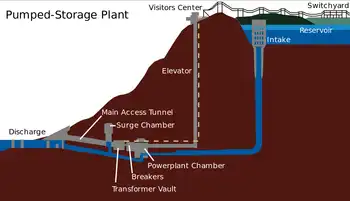LED global market should keep getting brighter and brighter
The global market for light-emitting diodes - known as LEDs - is projected to grow from $205 million in 2006 to $985 million in 2011, according to Mountain View-based market research group Strategies Unlimited.
Consumers can currently use the standard incandescent bulb, the fluorescent bulb, or LEDs (in which a current flows through a chip of semiconducting material).
Because of their durability and long life, LEDs are gaining acceptance as the most economical and efficient technology for traffic lights, flashlights, landscape-lighting and outdoor lighting. But there's plenty of room for growth there, and one of the fastest-growing fields in LEDs is the virtually nonexistent residential market, according analyst Vrinda Bhandarkar, who studies the LED market for Strategies Unlimited.
Bhandarkar projects a compound annual growth rate of 37 percent in the LED lighting industry, which will help lower the high price of LEDs and encourage more money to fund research for improving efficiencies.
That growth will feed companies along the LED line: manufacturers, distributors and lighting sellers.
One person banking on that growth is Morgan Hill's Fred Oliveri, who launched LED Starlight Inc. in January after months of research and product development with business contacts in China.
"Of all the options out there, they last the longest and use the least amount of energy. You don't have to worry about changing the lights very often, they don't generate heat, so you don't use as much A/C. The No. 1 problem with LEDs is the price," he says. "But there's not much competition, and I think it's the right thing to do for the environment."
A U.S. government measure passed in December -- The Renewable Fuels, Consumer Protection, and Energy Efficiency Act of 2007 -- requires 25 percent greater efficiency for light bulbs starting in 2012, progressing to 70 percent greater efficiency in 2020.
The U.S. measure aims to replace the country's estimated 4 billion incandescent light bulbs -- a switch that will save Americans up to $6 billion a year in electricity costs, reduce energy consumption by 8 percent, and create 10 percent less greenhouse gas emissions forecast for 2030, according to the American Council for an Energy Efficient Economy.
It's an obstacle for makers of incandescent bulbs, which some scientists say can't meet those targets, although researchers in Japan are trying.
Ireland, Canada and Australia have announced plans to ban incandescent bulbs completely starting as soon as 2009.
The global push to alternative lighting has environmentalists and researchers looking for the best replacement for incandescents, and a few leaders have emerged: fluorescents, halogen incandescents and LEDs.
"Ideally, the holy grail is for LED lighting to be a major source," says Ron Runkles, industry director of the National Electrical Manufacturers Association. "LEDs have the most potential right now of anything on the horizon of saving the most energy."
The appeal of LEDs in lighting is that laboratory tests have shown them to be longer lasting and more energy-efficient than incandescent bulbs and compact fluorescents - the corkscrew-shaped bulbs subsidized by groups such as Pacific Gas & Electric Co., which spent $116 million in 2007 to make CFLs more affordable.
A 75-watt incandescent light bulb lasts about 1,000 hours; a comparable CFL 8,000 to 10,000 hours; and an LED 35,000 hours, according to the U.S. Department of Energy's Office of Energy Efficiency and Renewable Energy.
Incandescents produce about 12 lumens per watt; CFLs around 55. LED bulbs have produced 121 lumens per watt in lab testing but haven't reached those efficiencies in consumer use, Bhandarkar says.
For the equivalent light output, an incandescent bulb would cost a dollar, a CFL less than $5 and an LED as much as $50.
Consequently, the DOE recommends CFLs to consumers because it says they achieve the highest efficiency for the lowest cost.
CFLs aren't perfect: They contain minor amounts of mercury, don't perform as efficiently in cold temperatures and can shatter in rough handling because they are made of glass. But many energy experts say they're the best option for now.
"CFL and fluorescents offer extremely high efficiency at very low prices. LED lighting is not there yet," Bhandarkar says. "That's why lots of people talk about CFL as an intermediate solution. The research in LED is going so fast that the efficiency and price should improve in the next few years."
Prices are already dropping. Bhandarkar says LEDs became 10 percent to 15 percent less expensive in 2007, and Phillips LED Lighting Division projects that the price of LEDs will continue to decline by at least 10 percent a year.
The interest in LEDs started in the second quarter of 2007, and by summer and fall customers began buying LEDs, says Rob Brooks, manager of the projects quotation department for Central Wholesale Electrical Distributors Inc. in Pleasanton. The company sells lighting to builders, contractors and lighting designers.
"There has been quite a bit of an increase in interest in LEDs but not as much of an increase in selling the product because it's still a bit expensive," Brooks says.
Customers similarly started asking for CFLs six to 8 years ago; now CFLs and fluorescents make up 70 percent of their business and incandescent just 5 percent, he says.
"There's now an emphasis on CFLs, and we're in the infancy of LEDs," Brooks says. "For a while, there's going to be a combination. Until LEDs get to the point where the cost gets down to where it's more efficient than CFLs, CFLs are going to continue to take the lion's share of business."
Ronnie Kweller, a spokeswoman for the Alliance to Save Energy, says one of the major obstacles to the adoption of more-efficient lighting is changing consumer behavior.
"What we try to convey is the lifetime cost of the bulbs is going to be much better," she says. "But soon, the inefficient products won't be on the market, so the decision will be made for them. In the meantime, we have to keep up education."
Phillips LED Lighting Division projects that within three to five years, LEDs will be competitive with compact fluorescents on ownership cost, which takes into account the price, longevity and energy savings.
"LEDs represent the most significant development in lighting since the invention of the electric light more than a century ago and we should expect the current rapid pace of change to continue," the report says.
There are some places where LEDs already making economic sense: places with 24-hour lighting (hospitals), with hard-to-reach fixtures (the Empire State Building, for one), colored lights (30 percent of U.S. traffic signals used LEDs in 2002), cold temperatures (commercial freezers or street lights in Michigan) and solar-panel powered lights (in rural areas off electric grids, such as in India, because solar panels and LEDs both run on DC currents).
According to "LEDs Magazine," consumers have already adopted LED lighting for the holidays. In 2003 less than 10 percent of holiday lights sold were LED, but in 2007 LEDs made up more than 90 percent of the market.
And other uses of LED are already widely accepted. The global LED market accounted for $4.2 billion in sales in 2006, when the size of the LED lighting market was added with other LED, such as phones, computers, televisions and signage.
Oliveri hopes his San Jose-based company can penetrate markets such as hospitals, governments and school districts before too many companies catch on to the potential growth of the LED market.
LED Starlight already offers 35 options from $3 to $50 each and has talked with potential customers throughout Silicon Valley.
"Everybody I'm competing with is little. I figure I have a three-year window before Phillips and GE take over the market," Oliveri says. "And that's OK. I'd help anybody out that wants to promote this because I believe in what I'm doing."
Related News

27 giant parts from China to be transported to wind farm in Saskatchewan
VANCOUVER - A set of 220-foot-long wind turbine blades arrived at the Port of Vancouver from China over the weekend as part a shipment bound for a wind farm in Canada.
They’re the largest blades ever handled by the port, and this summer, even larger blades will arrive — the largest North America has ever seen.
Alex Strogen described the scene as crews used two tandem cranes to unload 27 giant white blades from the MV Star Kilimanjaro, which picked up the wind turbine assemblies in China. They were manufactured by Goldwind Co.
“When you see these things come off and put onto…





